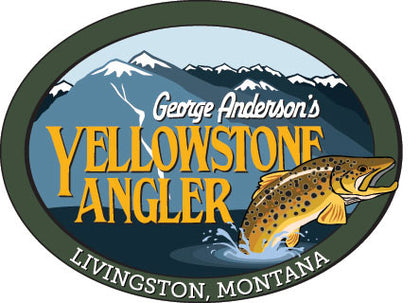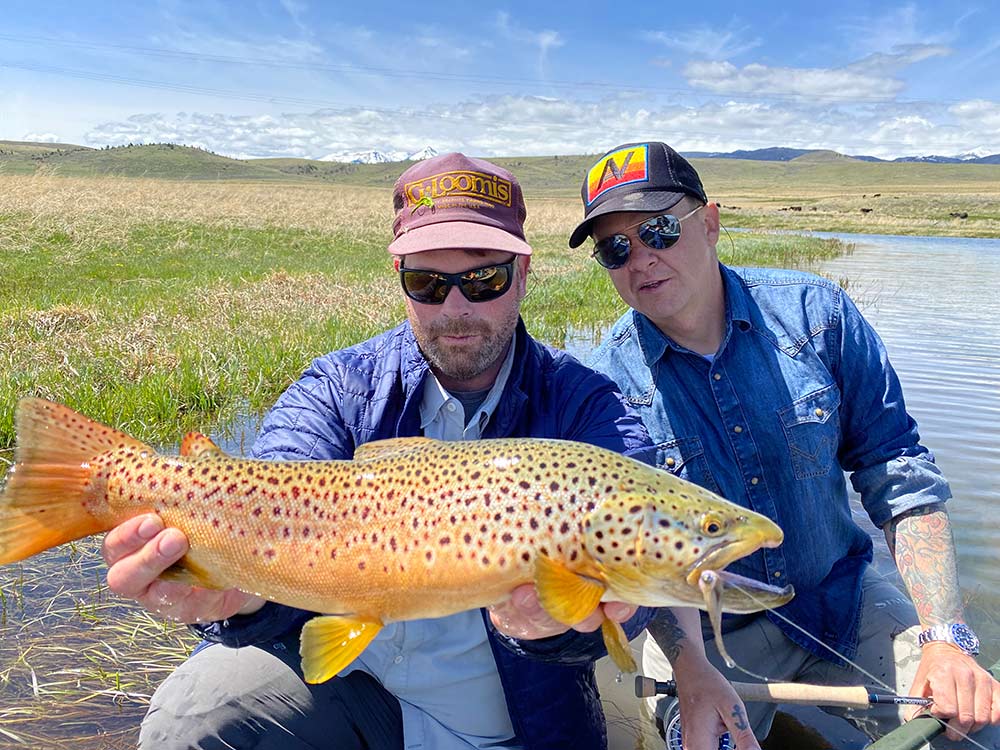Local and Private Lakes
 For those of you who have fished in Montana before and not fished any of the lakes in southwest Montana, let us show you exactly what you are missing! The majority of people pass on the notion of coming out here to fish a lake. That’s fine of course, but the clients who dip into this realm frequently come back to the shop grinning from ear to ear and phone full of fish photos and great scenery! We even have a few clients who come out to our area to exclusively fish lakes with our guides.
For those of you who have fished in Montana before and not fished any of the lakes in southwest Montana, let us show you exactly what you are missing! The majority of people pass on the notion of coming out here to fish a lake. That’s fine of course, but the clients who dip into this realm frequently come back to the shop grinning from ear to ear and phone full of fish photos and great scenery! We even have a few clients who come out to our area to exclusively fish lakes with our guides.
Stillwater fishing can be similar to saltwater fishing as it offers great sight fishing. it's fun to see fish cruising the weed line looking for damsels, callibaetis, or hoppers. And when they eat, the take is often unforgettably perfect! When the fish aren't up looking for food near the surface we throw nymphs under a bobber and also throw streamers or leeches on a sinking line.

The fish in most of the lakes we fish are 12-18" but the larger trophy fish grow as big as 25" or more. Many of these trout are wild and some are stocked as fingerlings. Since they have grown up eating insects rather than hatchery pellets they look (and fight) like wild fish.
One great thing about paying a rod fee on a private lake is you often have it to yourself. This exclusivity is worth its weight in gold in a world where fly fishing is getting more and more popular (and crowded). Getting a little more "elbow room" is always a good thing.
Another great thing about booking a private lake is there are lots of fish, which is great for both experts and novice anglers alike. If you are a beginner, this means more chances to get used to seeing the eat, setting the hook, playing the fish (both stripping or reeling it in and letting it "run" so it doesn't break off on light tippet), landing fish, and holding them for a quick photo op. If you blow it, don't worry! You'll have plenty more chances to learn from your mistakes and get better as the day goes on. That way if you are on the river the following day and hook a big brown you'll have more experience.

The lakes that we guide on offer a unique and varied opportunity for the seasoned angler as well. For the expert angler, it is quite a thrill to fool a big fish working a hatch in skinny water. Great casters can take advantage of having their fly on the water, and then if they see a riser elsewhere, they can pick up their line and re-cast it in the direction the riser is swimming. This often results in an eat (if you pick the right direction). At times we will even size down to 5X or even 6X tippet, which makes landing these big fish on a small dries and thin tippet both challenging and rewarding.
These lakes are not affected by runoff, making them a great choice if you are here in May or June while most rivers and tributaries are swollen with muddy snowmelt. The weather can be a bear in April but as soon as the ice comes off, the fish are ready to eat and likely haven't seen many flies yet. The only time the lakes are not a great choice is if we get a week or so of 100 degree weather. The fish are still there but choose to go deep, making deep nymphing your only option which is not nearly as fun as fishing dries or sight fishing.
Hatches

In the early season (March, April, May) we often fish chironomids (which are huge lake midges). These midge pupa patters are often a half inch long and are very distinctive as food for foraging fish. We also fish midges dry fly patterns when conditions are right (however it can often been too windy in the early Spring).
Starting in late May, June, July, August, and September we'll start seeing both damsels and callibaetis hatches. The thickest months for dries are June and July but damsel nymphs and callibaetis nymphs almost always do the trick. Stillwater fishing is different as we often welcome a bright sunny day. Not only does it make it easier to see that fish cruising, but it heats the water up and gets the insects hatching better.
Early in the morning we often fish callibaetis spinner patterns on the surface (these are callibaetis that have expired the night before after mating. Their wings nearly always spread out, and with their distinctive tails the fish sip these as sitting ducks. Damsel dries (similar to a dragon fly but smaller), on the other hand get fish jumping out of the water to eat them!

Scuds (a small freshwater shrimp) are always a favorite menu item for stillwater fish, as are leeches. We have many of these patterns in different sizes and colors. Scuds and leeches can be fished by stripping very slowly, (or using a hand retrieve) or just sitting still and waiting for the fish to come to it (usually under a strike indicator).
There are some other less known patterns we use as well including dragon flies, dragon fly nymphs, snail patterns, water boatman patterns, and worms. Other nymphs such as perdigons, bead head attractor nymphs, or even stonefly nymphs like rubberlegs can also produce big fish.
Getting a Guide

By far the best way to fish these lakes is with a guide. They know the intricacies of the day including what will be hatching and where the fish will be looking to eat when the hatch is on. They also know the spots where fish go when water temps are getting hotter or when there are no more rising fish.
Most all of the private lakes we book require a guide now unless you have been "grandfather" claused in as a trusted long time customer of each property. If you decide to book a guide on either a local or private lake we are happy to take care of all the fine details for you, all you'll have to do is meet the guide at the designated meeting place, (usually the shop), in the morning and go fishing!
Most all of the lakes we fish with are within an hour to an hour and a half drive from the shop. If you are interested in hearing more about the variety of lakes we offer guided trips on; give us a call at 406-222-7130 or E-mail us.


